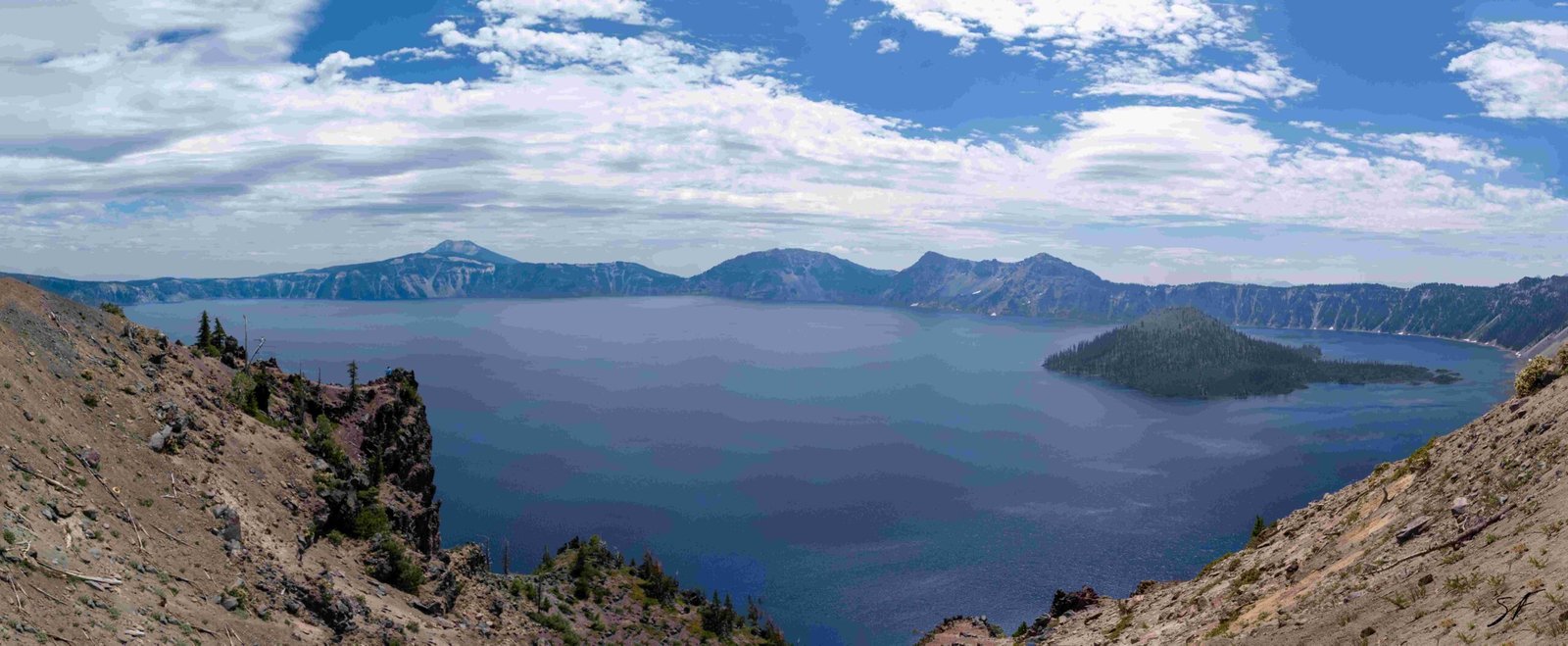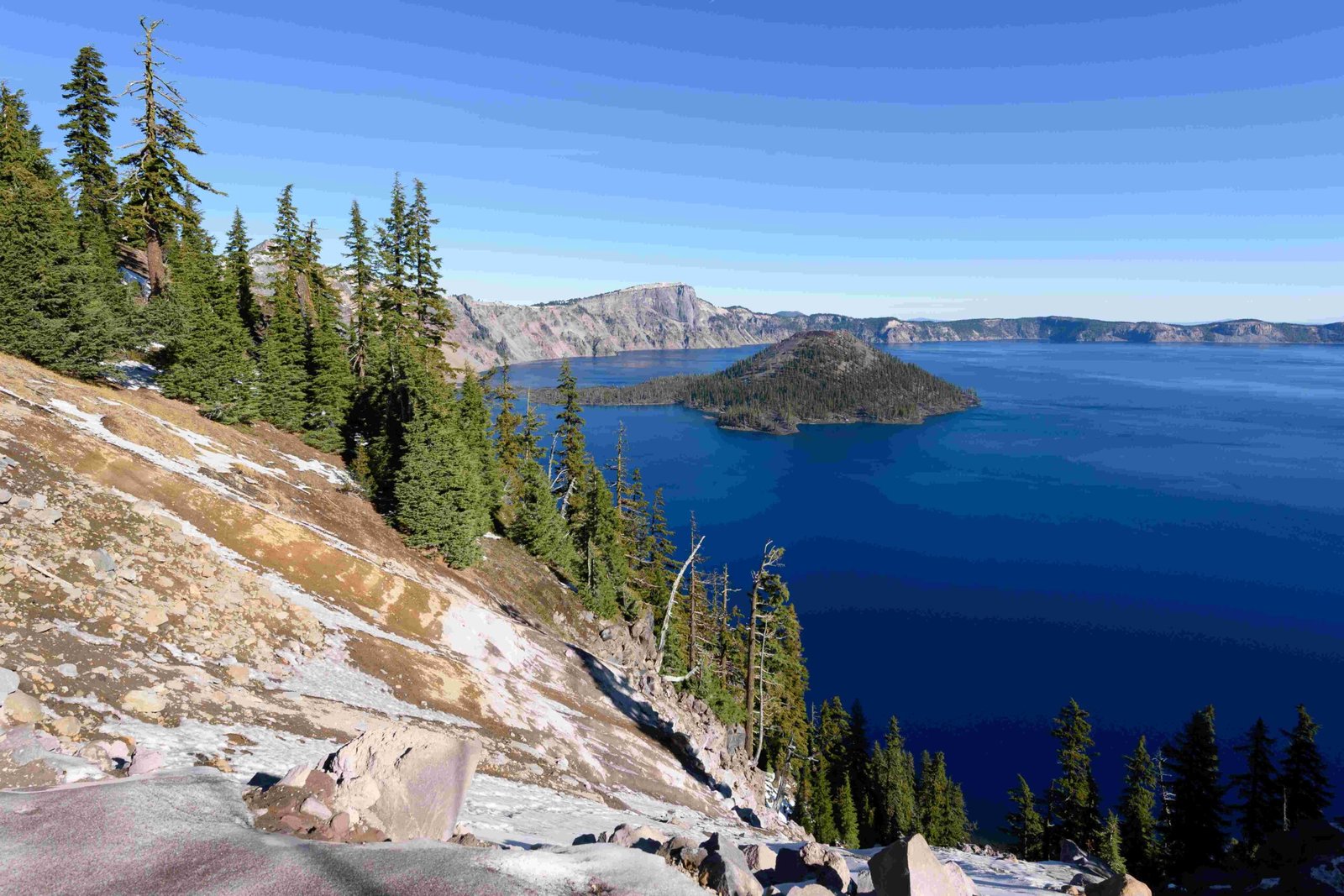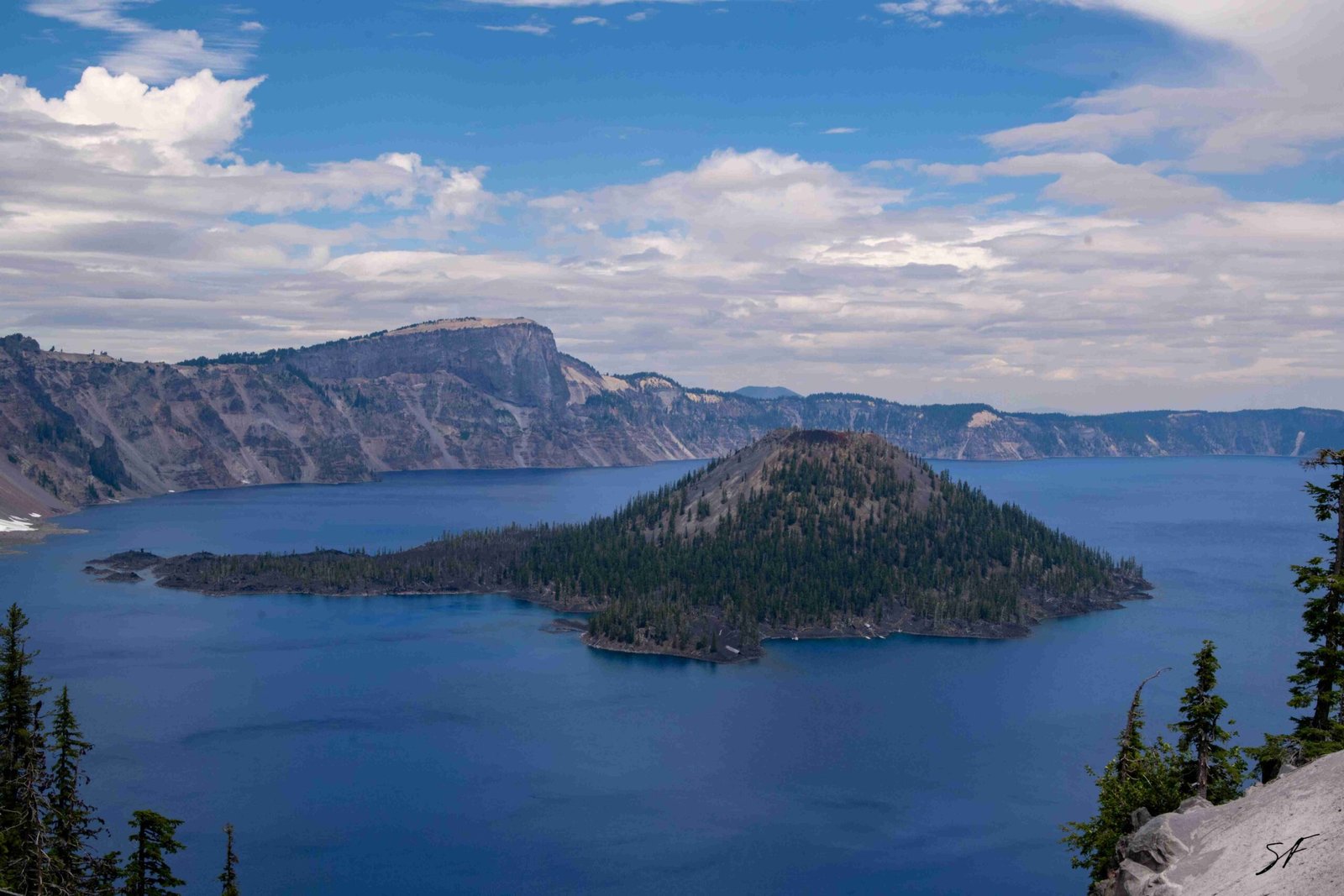Palisade Point at Crater Lake offers breathtaking panoramic views of the deep blue waters and surrounding volcanic slopes. Located along the rim at approximately 7,100 feet elevation, it’s accessible via the Cleetwood Cove Trail or by driving along Rim Drive. This viewpoint provides stunning vistas of the lake, Wizard Island, and the Phantom Ship, making it a must-visit spot for photographers and nature enthusiasts alike.
What is the Significance of Palisade Point at Crater Lake?

Palisade Point is one of the prime viewpoints along the rim of Crater Lake, offering visitors a unique perspective of this natural wonder. Its elevation and location provide an unparalleled view of the lake’s deep blue waters, the surrounding caldera, and iconic features like Wizard Island and the Phantom Ship. The point is not just a scenic spot but also a testament to the volcanic history of the area, showcasing the steep cliffs and volcanic slopes that form the caldera.
How Can Visitors Access Palisade Point?

There are two main ways to access Palisade Point:
- Hiking:
- Trail: Cleetwood Cove Trail
- Length: 2.2 miles roundtrip
- Difficulty: Strenuous
- Elevation Change: 700 feet
-
Estimated Time: 2-3 hours (including time at the lake)
-
Driving:
- Route: Rim Drive
- Accessibility: Parking available at designated pull-outs near the point
For those choosing to hike, the Cleetwood Cove Trail offers a challenging but rewarding experience. The trail winds through tall lodgepole pines and mountain hemlocks, providing glimpses of the lake as you descend. Once at the shore, visitors can walk to Palisade Point for the full panoramic view.
What Are the Best Times to Visit Palisade Point?
The best times to visit Palisade Point depend on your interests:
- For Photography: Early morning and late evening offer the best lighting conditions, reducing glare on the water and providing softer light for stunning photographs.
- For Clear Views: Mid-day typically offers the clearest visibility, allowing you to see the full expanse of the lake and surrounding features.
- For Fewer Crowds: Early morning or late afternoon tend to be less crowded, providing a more serene experience.
| Season | Accessibility | Pros | Cons |
|---|---|---|---|
| Summer | Fully open | Warm weather, all facilities open | Crowded |
| Fall | Open, less crowded | Beautiful foliage, mild weather | Some facilities may close |
| Winter | Limited access | Snow-covered landscape, unique views | Many roads and trails closed |
| Spring | Gradually opening | Wildflowers, fewer crowds | Some areas may still be snow-covered |
What Geological Features Can Be Observed from Palisade Point?
From Palisade Point, visitors can observe several key geological features:
- Caldera Rim: The steep volcanic slopes that form the rim of the crater.
- Lake Surface: The incredibly clear, deep blue water of Crater Lake.
- Wizard Island: A cinder cone that formed after the initial caldera-forming eruption.
- Phantom Ship: A small island resembling a ghost ship, composed of erosion-resistant lava rock.
- Rock Composition: The surrounding cliffs are primarily composed of andesite, dacite, and rhyolite, showcasing the volcanic history of the area.
How Does the Elevation at Palisade Point Compare to Other Areas in Crater Lake National Park?
Palisade Point sits at an elevation of approximately 7,100 feet above sea level, which is consistent with other viewpoints along the rim of Crater Lake. Here’s a comparison with other notable elevations in the park:
- Palisade Point: ~7,100 feet
- Average Rim Elevation: 7,100 feet
- Crater Lake Surface: 6,173 feet
- Mt. Scott (Highest Point): 8,929 feet
This elevation provides visitors with a commanding view of the lake and surrounding landscape, while also contributing to the unique climate and ecosystem of the area.
What Wildlife Might Visitors Encounter Near Palisade Point?
While hiking to or observing from Palisade Point, visitors might encounter various wildlife species:
- Golden-mantled Ground Squirrels
- Clark’s Nutcrackers
- Steller’s Jays
- Mule Deer
- American Pikas (in rocky areas)
- Various bird species
It’s important to remember that wildlife should be observed from a distance and never fed. The ecosystem around Crater Lake is delicate, and human interference can disrupt natural behaviors and habitats.
What Are the Photography Tips for Capturing Palisade Point Views?
To capture the best photographs from Palisade Point:
- Use a wide-angle lens to capture the expansive views.
- Bring a polarizing filter to reduce glare on the water.
- Consider using a tripod for stability, especially in low light conditions.
- Experiment with different compositions, including foreground elements like trees or rocks.
- Be patient and wait for the right light – early morning or late evening often provide the most dramatic lighting.
How Does Weather Affect the Experience at Palisade Point?
Weather plays a significant role in the experience at Palisade Point:
- Summer: Generally clear skies and warm temperatures, ideal for hiking and photography.
- Fall: Cooler temperatures and potential for early snow, offering unique photographic opportunities.
- Winter: Heavy snowfall can limit access, but provides stunning snow-covered landscapes.
- Spring: Gradual melting of snow, potential for wildflowers, and variable weather conditions.
Visitors should always check current weather conditions and park alerts before planning their trip, as sudden changes can affect accessibility and safety.
What Facilities Are Available Near Palisade Point?
While Palisade Point itself is a natural viewpoint without developed facilities, nearby amenities include:
- Parking areas along Rim Drive
- Restrooms at major viewpoints and trailheads
- Picnic areas at designated spots along Rim Drive
- Visitor centers with information and exhibits (not directly at Palisade Point)
It’s important to note that services are limited within the park, so visitors should come prepared with water, snacks, and any other necessary supplies.
How Can Visitors Prepare for a Trip to Palisade Point?
To ensure a safe and enjoyable visit to Palisade Point, consider the following preparations:
- Check current park conditions and alerts before your visit.
- Wear sturdy hiking shoes if planning to use the Cleetwood Cove Trail.
- Bring plenty of water and snacks, especially if hiking.
- Pack layers of clothing, as temperatures can vary significantly throughout the day.
- Bring sun protection, including sunscreen, hats, and sunglasses.
- Carry a map of the park and familiarize yourself with the area.
- If driving, ensure your vehicle is prepared for mountain roads and potential winter conditions.
By following these guidelines and respecting the natural environment, visitors can fully appreciate the stunning beauty of Palisade Point and Crater Lake National Park.

